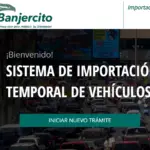How Long Does It Take To Learn Spanish With Rosetta Stone?
Spanish is among the most popular languages taught, with about 21 million people learning it. Many learn Spanish by attending Spanish classes, relying on apps such as Duolingo, or using self-study software such as Rosetta Stone. However, how long does it take to learn Spanish with Rosetta Stone?
It may take you about 250 hours of learning to achieve intermediate (B1) fluency with Rosetta Stone. That means if you spend 30 minutes working through the program, it will take about a year and four months to complete. You can improve faster by practicing with Spanish speakers.
This article explores the Rosetta Stone and how long it takes to learn Spanish with the software. We also discuss the strengths and weaknesses of Rosetta Stone, so you can decide if you want to use it to learn Spanish.
We also discussed if Duolingo’s Spanish language program is good for Spanish learners. If that interests you, do click here and check it out.
What Is Rosetta Stone?
Rosetta Stone is a series of software that focuses on teaching over 30+ languages. It uses a unique method called Dynamic Immersion to teach a language. Lessons may include vocabulary, grammar, speaking, and writing activities and may require you to use a mike and a keyboard. It is available as CD-ROM, downloadable, or web application.
Rosetta Stone is a language learning software published by Rosetta Stone Inc. It was founded by Alex Stoltzfus in 1992 but is now part of the IXL Learning family of products. Rosetta Stone offers language courses in Spanish and also 30+ languages.
The name for the software was inspired by the ancient stone slab from ancient Egypt, where the Decree of Memphis was inscribed in three different writing systems. The logo also depicts the original Rosetta stone.
It uses a unique and proprietary system to teach a language, which Rosetta Stone calls Dynamic Immersion. Dynamic Immersion tries to teach the new language by using only the new language. This means there will be little to almost no use of English.
This is achieved by slowly building vocabulary and adding additional practices where you get to speak, practice and use a new language in your activities. Rosetta Stone tries to help you learn a language by getting you to pick up common, regular words that you may use in real life first, with pictures to reinforce it.
One common activity in a Rosetta Stone session is matching words to pictures or vice versa in a vocabulary lesson. You may be asked to listen for writing and then type in words using your keyboard.
For speaking activities, you may be asked to speak into a mike. Rosetta Stone’s proprietary TrueAccent technology will hear and correct your pronunciation. Grammar activities are also present in Rosetta Stone, but the focus is on mood and tenses.
Rosetta Stone’s programs could be divided into 5 levels, with newer levels more difficult and advanced than before. Depending on the language, some may have more levels. For example, there are only three levels for Arabic and one for Thai. For Spanish, there are five levels.
Rosetta Stone’s language learning programs could be accessed in three formats: a CD-ROM, downloadable and installable software, or an online subscription. It is also surprisingly accessible as an app within Xbox One.
Is Rosetta Stone Really Able To Help You Learn Spanish?
Rosetta Stone can help you learn and improve your Spanish. An independent study confirmed that after 55 hours of Spanish language sessions with Rosetta Stone, 56-72% of learners will improve their spoken Spanish by one level in the WebCAPE and ACTFL tests.
Some people believe that language should be learned in a classroom, with friends and a teacher. They may find learning a language using nothing but software and apps a little suspecting.
However, software such as Rosetta Stone is capable of helping you learn and develop fluency in Spanish. This is proven by an outside study by Dr. Roumen Vesselinov of the City University of New York.
In this study, about 6000+ mid-aged adults from the US were randomly selected to undergo the test. These subjects spend 55 hours learning Spanish using Rosetta Stone before sitting for two tests, the WebCAPE test and the ACTFL.
The WebCAPE (Web-based Computer Adaptive Placement Exam) is used in many universities to measure Spanish language proficiency, including Harvard, Boston, Brown, and more. The ACTFL test, or the American Council on Teaching of Foreign Languages, is a test to measure spoken proficiency in 37 languages, including Spanish.
After Rosetta Stone sessions, 95% of these research subjects scored between 220-255 points on the WebCAPE test. Meanwhile, 56-72% of them also improved their ACTFL spoken Spanish by one level.
This proves that Rosetta Stone is capable of helping learners to improve and become fluent in Spanish.
The study also observed significant test scores improvement can be observed when learners finished level 2 or 3. Suppose you are to start learning Spanish using Rosetta Stone. In that case, you may want to pay more attention during activities in levels 2 and 3 Spanish.
How Long Do You Need To Learn Spanish With Rosetta Stone?
Rosetta Stone Spanish may require 250 hours to complete. If you choose to work on the course 30 minutes every day, that translates into 500 days, or about a year and four months. You can speed up learning by allocating more daily time to work on the materials.
Rosetta Stone Spanish is divided into 5 different levels, with you starting at level 1 and then progressing and finishing level 5. Each level may be broken down into around 12-20 units of content, focusing on different skills and knowledge.
Rosetta Stone officially did not give the exact work hours needed to complete the whole 5 levels. It only gives a ballpark figure of 200+ hours. However, an unofficial source indicated it may take around 250 hours to complete.
Suppose we take the 250 hours figure as is. Suppose we decide to allocate 30 minutes every day to work on Rosetta Stone. In that case, it will take 500 days to complete the 250 hours of activities and instructions.
That translates into about a year and four months to complete. This does not consider things such as weekends or if there are days you have to skip your learning. This may mean you will use up more time in real life.
500 days may sound long. You can shorten the learning time by simply allocating more time to your daily interaction with Rosetta Stone.
Assuming you can slot in an hour every day with Rosetta Stone, that would shorten the learning time to 250 days, which is only about 8-9 months. However, this could be rather intense and may not work for everybody.
Is Rosetta Stone Good For Learning Spanish?
Overall, Rosetta Stone is a good system to learn Spanish. Its Dynamic Immersion method may work for those who want a full immersion into Spanish to learn it faster. Its online nature also made it easily accessible. The issue with Rosetta Stone is its lack of spoken interactivity. This means you can’t practice speaking Spanish.
| Pros | Cons |
| Beginner Friendly Interface Dynamic Immersion forces learners to ‘sink or swim’ Easily accessible via phones or digital devices | Only to B1 fluency Lack of speaking interaction Overly sensitive pronunciation check |
Rosetta Stone has been around for more than 25 years because it is a language-learning software that works.
When reviewing users’ feedback on Reddit and Quora, many love its unique Dynamic Immersion method and how easy it is to complete units over their phone apps.
Complaints about the software seem to range between lack of speaking interaction and oversensitive True Accent listening technology.
Pros: Beginner-Friendly Interface
Rosetta Stone’s user interface does not remind you of airplane cockpits. It is simple, easy to use, and in many ways, intuitive. This is because the user interface also needs to cater to the Dynamic Immersion method, which means icons instead of English words.
The level 1 course is also very easy to complete. Perhaps it is done this way to encourage you with small wins and drive your motivation to keep learning.
Pros: Dynamic Immersion
If you like to learn in a ‘sink or swim’ approach, then you will love Dynamic Immersion. This system of language learning is unique to Rosetta Stone only. In Dynamic Immersion, you will be made to interact with the activities in Spanish.
For example, rather than hearing or seeing ‘Perro… Dog’ on screen, you will see the word Perro and a picture of a dog. You will then see pictures of several other animals and their Spanish names. Your activity would be to match the animal pictures to their Spanish names.
This system cuts your reliance on English from the first lesson, forcing you to remember the words, names, and spelling of words more properly. This should help you to learn Spanish faster.
Pros: Easy Access
Suppose your Rosetta Stone access is a web subscription. In that case, you should be able to access the lessons using your digital devices. This means you can try to take out one or more units of lessons whenever you are free during the day.
This allows you to be more efficient with the lessons, and provided that you can do more of the lessons, you may complete all five levels faster.
Cons: Only To B1 Fluency
One of the complaints users seem to have about Rosetta Stone is that after completing 250 hours of lessons, they are only expected to achieve B1 proficiency in the CEFR. Common European Framework of Reference for Languages labels B1 as intermediate level.
Spanish language programs such as Babbel can bring learners up to C1 in CEFR, which is equivalent to advanced fluency. Babbel’s program requires around 275 hours to finish. When you do the calculation, it seems that you may acquire 2 levels of fluency better with Babbel, despite adding only another 25 hours of learning.
Cons: Overly Sensitive Pronunciation Check
Some users also complained about the overly sensitive pronunciation check that Rosetta Stone has. Rosetta Stone uses TrueAccent technology to listen to your pronunciation. During pronunciation units, you may need to speak to a microphone.
This is when things get difficult. Users mentioned that Rosetta Stone gives very little leeway to accents, which means a minor mistake may cause you to get the pronunciation wrong. In fact, when the learner pronounces the word to a native speaker, the native speaker understands it well.
Cons: Lack Of Speaking Interaction And Practice
Perhaps the major issue with all software-based language learning solutions is that Rosetta Stone cannot provide a solid, interactive speaking activity. This is because you only interact with the software during lessons and not with a teacher. You also do not have classmates.
This means you may want to find a solution to complement your Spanish lessons, perhaps by finding Spanish-speaking groups. You can also use platforms such as Verbalicity, where you can get Spanish tutors to work with you online.



